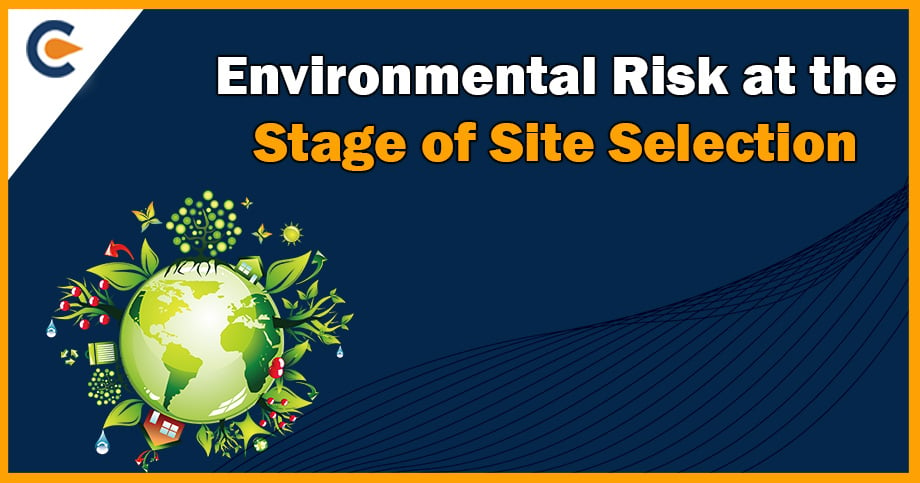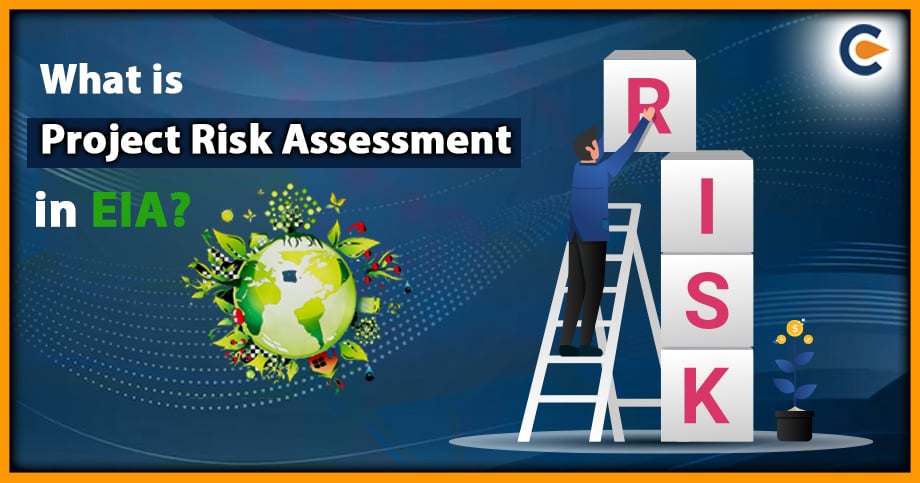Amidst growing concerns in the industry, one should evaluate the risk factors related to the environment for a better understanding at the site selection stage. Prediction of environmental risk could provide basic knowledge to take a good decision for sustainable resource development. To mitigate these risks, the jurisdiction has developed a Risk Assessment (RA) to approach assessing and reporting on risk factors which are also incorporated in Chapter/Section VII of the generic structure of EIA.
Proper site selection takes into consideration the effects of the building on the location and landscape, environmental concerns such as groundwater and stormwater flow and wildlife habitat, the amount of sunlight the building receives, and the exposure of the building to wind. The perfect location/site for a green building can cut energy costs and reduce the environmental impact on the land.
In recent years, companies have faced many problems regarding site selection before purchasing any land because of environmental risks or natural disasters such as earthquakes, floods, Hurricanes, avalanches, cyclones etc.
For instance, as per a recent report, a newly constructed building collapsed in turkey due to two major earthquakes measuring 7.8 and 7.5 on the magnitude scale. The reason is the failure to comply with the building standards and identify the environmental risk factors.
As per the BBC, the recent construction means it should have been built to the latest standards that were updated in 2018, which require structures in earthquake-prone regions to use high-quality concrete reinforced with steel bars. Columns and beams must be distributed to absorb the impact of earthquakes effectively.
Environmental Risks That Influence Site Selection
Keep the following risk indicators in mind during your due diligence process:
- Soil Quality: Soil contamination, agriculture runoff, accidental chemical spill.
- Water Quality: Water contamination, Leachates runoff & other parameters
- Past Cumulative Impacts such as air, noise, soil & water pollution.
- Socio-Economic Risk: Rehabilitation and Resettlement.
- Topographical Pattern such as Low/High lying areas like Hilly, steep, Mountains etc.
- Geological Features like soil, mineral and rock type.
- Ecology & Biodiversity like National Park, Wildlife sanctuary, Native species, Alien Species etc.
- Natural Hazards like earthquakes, subsidence, landslides, Soil erosion, Landslide, flooding, or extreme or adverse climatic conditions.
- Ground Water Table Fluctuation (or Percolation rate)
- Water Bodies: wetlands, dams, rivers, oceans, lakes etc.
- Land Classification, i.e. private, government and agricultural land etc.
- Infrastructure Facilities such as highways, roads, rail, ports, harbours, oil & gas pipelines, any defence installation, interstate and international boundaries etc.
- Wind Direction
- Livestock Grazing
- Critically & Severely Polluted Areas as per the CPCB Guidelines.
- Eco-Sensitive area (EPA Act,1986)
Grading of Risk
- Grade 1: Low Risk
- Grade 2: Low to Medium
- Grade 3: Medium to High
- Grade 4: High Risk
Process of Site Selection
The general site selection process will comprise the following stages:
- Define Study Area
- Screen Study Area
- Identify areas suitable for sites through SWOT Analysis
- Identify Relevant issues of Concern (environmental, socio-economic, project cost, soil quality, water quality, health, water contamination, biodiversity etc.) with the help of an Environmental professional’s advice.
- Analysis of the risk by Environmental Professionals
- Take decision
The existing laws and environmental standards for air, water, soil, noise & waste must be incorporated into the general site selection criteria.
Negligence of Environmental Risk at the Stage of Site Selection
Identifying risks to the environment is a crucial step at the site selection stage. Selection of the poor site will permanently handicap the project’s revenues and profits, which can result in its failure as mentioned below:
- Refusal of Land permit from the concerned authority
- Refusal of Environmental permissions & clearance such as Environmental Clearance, CTE/CTO etc.
- Penalties/Fine levied by the authority.
How to Mitigate Environmental Risk at the Site Selection Stage
Mitigation aims to eliminate or reduce negative impacts. Methods to mitigate these risks can be considered in the following order of preference:
- Conduct a site survey to identify elements and create a master development plan.
- Avoid deforestation, disruption of groundwater flows and other mitigation measures to minimise the ecological footprint.
- Hire Environmental professionals, architects, geologists etc., to minimise and evaluate the environmental risk.
- Select a site that meets green standards (Use of sun’s energy in the daylighting, solar gain and natural lighting).
- Avoid the disturbance of any Wildlife habitat, Human Settlement, Forest area etc.).
- Avoid development in poorly located sites, i.e. wetlands, virgin native ecosystems, or restore native ecosystems.
- Selection of the site should be made in a proper manner that reduces erosion and contamination.
Necessary Environmental Approval/Clearance Required Under The Following Acts Should Be Expressly Stated:
- Forest Clearance (FC) as per The Forest (Conservation) Act, 1980[1]
- Wildlife clearance (NBWL) as per The Wildlife (Protection) Act, 1972
- The CRZ Notification, 1991 (amended thereof 2011)
- Environmental Clearance
Conclusion
Proper site selection after identifying the environmental risk significantly lessens the environmental and socio-economic impacts of developmental areas. It accelerates the sustainable development of an area which results in growing successful businesses & opportunities for the stakeholders. However, the whole process needs expert assistance to ensure whether your project is environmentally sound or not. To develop and proceed with your project in a hassle free manner, risk assessment should be done with the guidance of environmental professionals before the commencement.
Also Read:
A Complete Guide For Environmental Audit
Types Of Environmental Impact Assessment
Environmental Clearance Process In India: A Complete Outlook










